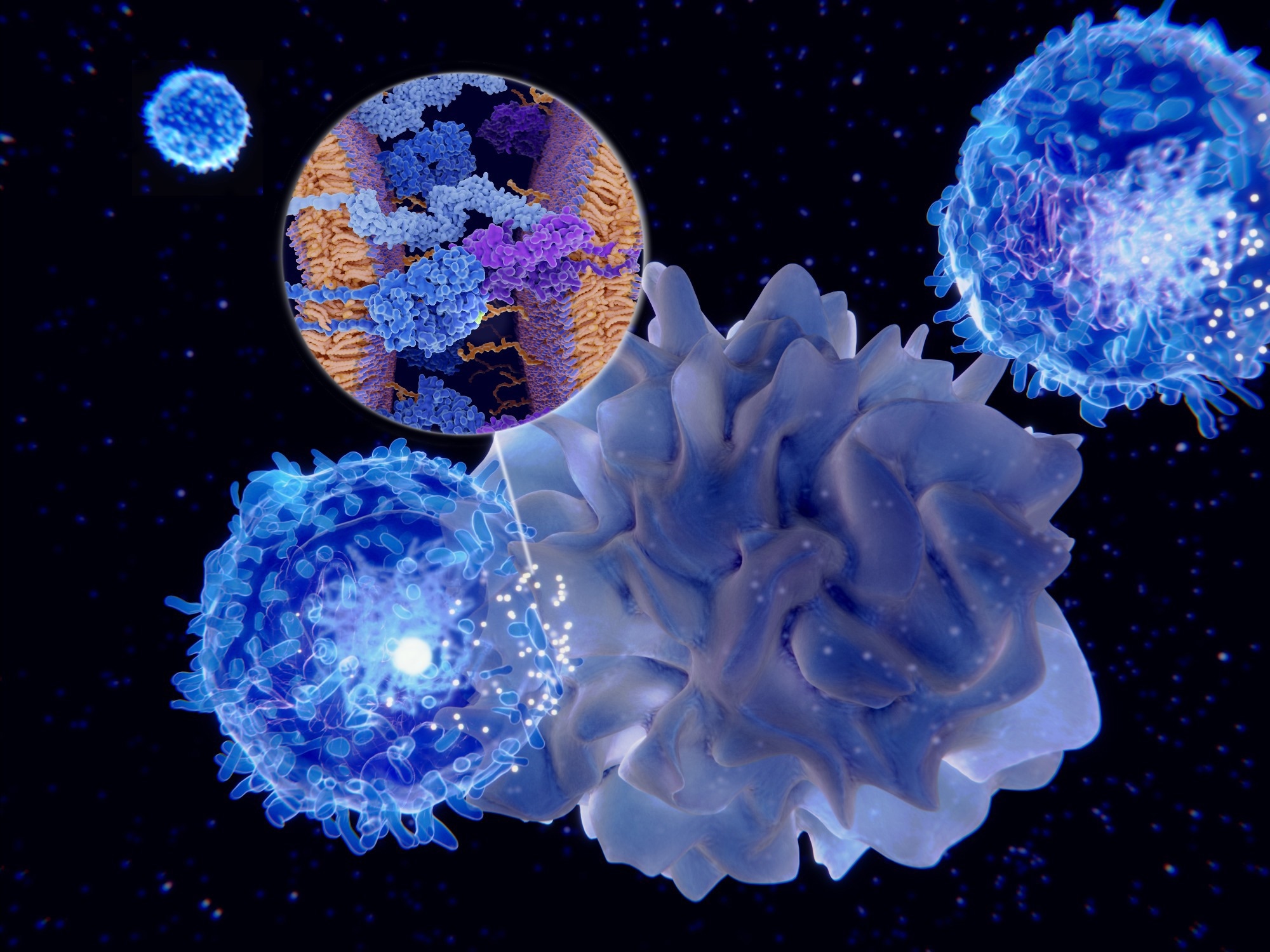In a recent study published in the journal Science Advances, researchers explore the association between cross-reactive immunity to Epstein-Barr virus nuclear antigen 1 (EBNA1) and multiple sclerosis (MS).
 Study: Cross-reactive EBNA1 immunity targets alpha-crystallin B and is associated with multiple sclerosis. Image Credit: Juan Gaertner / Shutterstock.com
Study: Cross-reactive EBNA1 immunity targets alpha-crystallin B and is associated with multiple sclerosis. Image Credit: Juan Gaertner / Shutterstock.com
The relationship between EBV an MS
A hallmark of MS, which is a chronic inflammatory autoimmune disease of the central nervous system (CNS), is demyelination and the presence of primary immune cells that have crossed the blood-brain barrier. Despite several decades of research, the cause of MS remains poorly understand; however, the disease is likely due to a combination of both environmental and genetic factors.
EBV infection, for example, is considered to be risk factor and prerequisite for a diagnosis of MS. Like MS, EBV also arises due to both genetic and environmental risk factors. Although more than 90% of the global population has likely been infected with EBV, only a small portion of individuals will subsequently develop MS.
Previously, the researchers of the current study reported that antibodies targeting specific regions of EBNA1 were strongly associated with MS. Autoantigen anoctamin 2 (ANO2), which is one of the two highly associated protein fragments of EBNA1, also exhibits cross-reactivity with MS antibodies.
In the current study, the researchers examine immune reactivity targeting CRYAB, which is expressed by oligodendrocytes in MS lesions, and its potential cross-reactivity to EBNA1.
About the study
Plasma samples from 713 MS and 722 control participants were obtained from the Swedish nationwide Epidemiological Investigation of an MS cohort. The controls in the study were selected based on population and were matched to MS patients by sex, age, and geographic area.
A suspension bead array assay was used to measure circulating anti-CRYAB autoantibodies, as well as EBNA1 and ANO2 proteins, in the plasma of MS and control samples.
Examining the cross reactivity of CRYAB antibodies
Anti-CRYAB immunoglobulin G (IgG) antibodies targeting CRYAB2-16 and CRYAB7-21 were increased in the plasma samples of MS patients as compared to controls. Similar trends were observed for adjacent peptides CRYAB1-15, CRYAB8-22, and CRYAB9-23, with the highest odds ratio (OR) for MS observed with CRYAB3-17 reactivity at 13.3% as compared to 7.2% of controls. Importantly, few other positive signals were observed for other CRYAB peptides and proteins.
CRYAB antibodies were similar in individuals with relapsing-remitting, secondary progressive, and primary progressive MS. Age, disease duration, and sex also did not impact anti-CRYAB reactivity.
Individuals with CRYAB3-17 reactivity also exhibited positive reactivity towards EBNA1393-412. Comparatively, ANO2134-153 reactivity was strongly correlation with EBNA1425-444, but not with the nonhomologous fragment EBNA1393-412.
Subsequently, the researchers immunized mice with CRYAB or EBNA1380-641 and subsequently determined the antigen reactivity of isolated T-cells. To this end, the CD4+ T-cells of EBNA1380-641-immunized mice produced a greater amount of interferon γ (IFN γ) following exposure to full-length CRYAB. Likewise, CD4+ T-cells of CRYAB–immunized mice reacted to EBNA1380-641 EBNA11-120 but not other MS-related autoantigens. No specific reactivity was observed between the CD8+ T-cells from CRYAB- or EBNA1380-641-immunized mice.
T-cells were also obtained from MS patients being treated with natalizumab and compared to those of MS patients prior to starting treatment and healthy controls. Increased levels of IFN γ, interleukin 17A (IL-17A), and IL-22 cells responding to CRYAB, EBNA11-120, and EBNA1380-641 were observed in MS patients treated with natalizumab as compared to the other two patient groups. Similarly, increased levels of primarily effector memory (EM) and central memory (CM) CD4+ T-cells were responsive to both CRYAB and EBNA1 antibodies.
Conclusions
The current study provides important evidence on the role of molecular mimicry and CRYAB in MS. Moreover, the researchers confirm the reactivity of CRYAB to EBNA1, thereby clarifying a possible mechanism by which EBV infection causes an adaptive immune response that eventually contributes to the development of MS.
Importantly, only about 20% of MS patients exhibit autoreactivities between EBV and MS autoantigens. Thus, certain underlying factors such as human leukocyte antigen (HLA), previous immune responses to environmental stimuli, or other undiscovered risk factors may be involved in the pathogenesis of MS.
Journal reference:
- Thomas, O. G., Bronge, M., Tengvall, K., et al. (2023). Cross-reactive EBNA1 immunity targets alpha-crystallin B and is associated with multiple sclerosis. Science Advances. doi:10.1126/sciadv.adg3032

